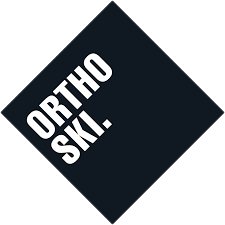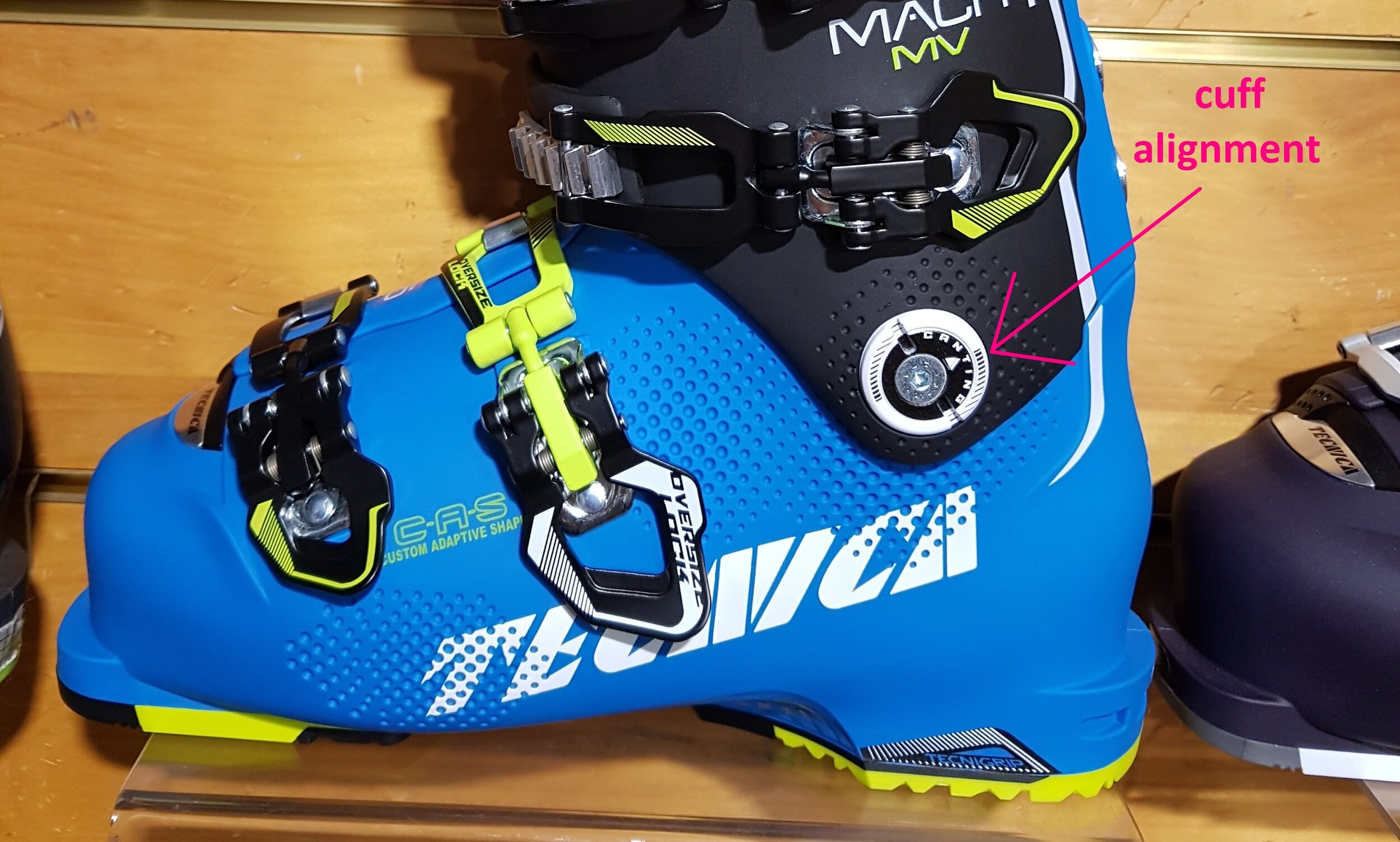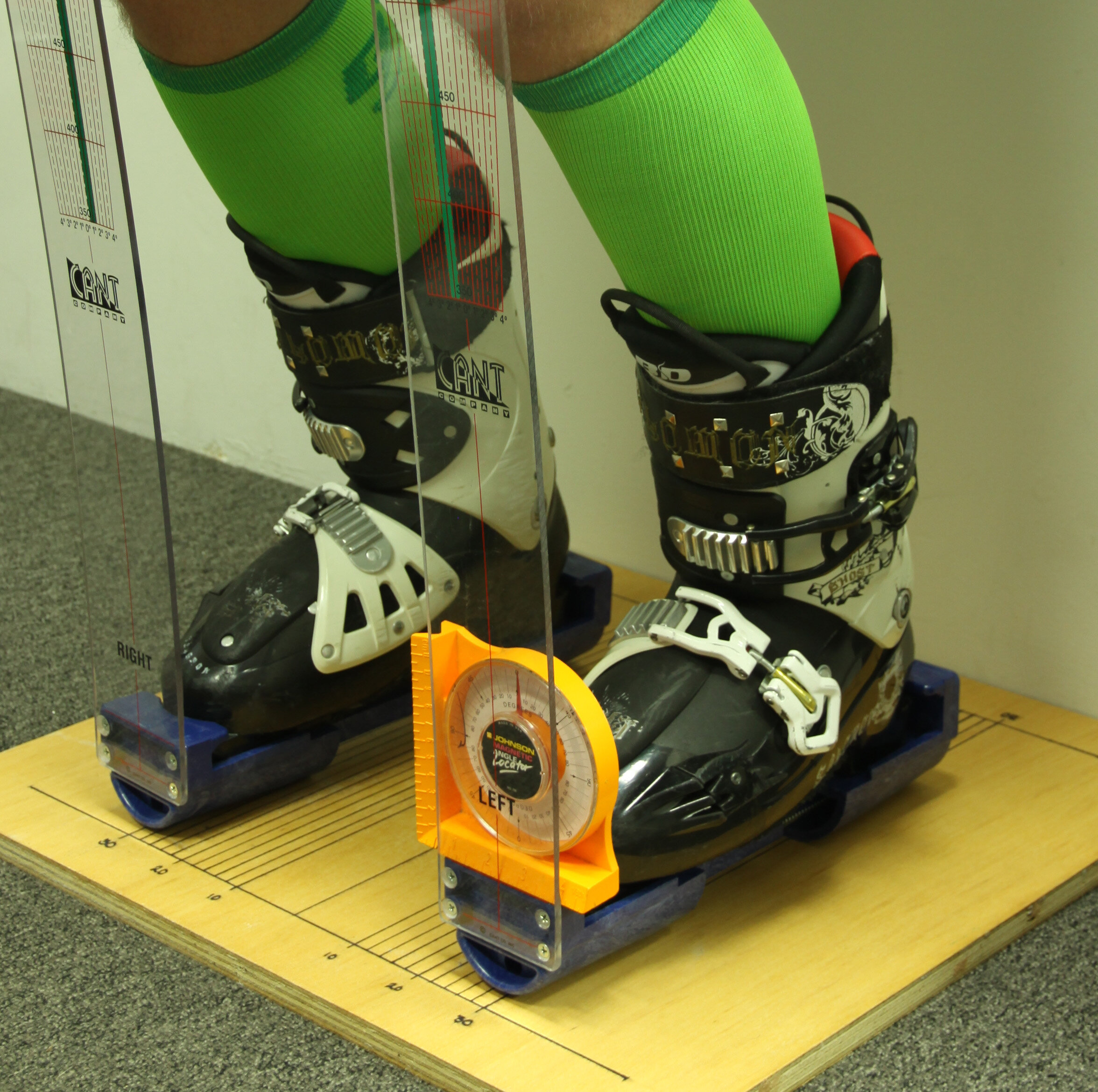All you need to know about canting in 2 minutes
Looking for that perfect edge to slice through the snow like butter? I can tell you how to get closer to finding it than you've ever been before. And no, the heading isn't missing an apostrophe - we're talking about canting folks!
Of course, perfect edging relies heavily on technique - this is without question. But what if you have been doing everything you've been told by your multitude of private ski instructors but you're still A-framing in the legs? Or you've been practising those edge rolls on all the cat tracks you can find, but one ski just wants to edge on the inside more than the other? Well my friends, let me tell you to get your alignment checked.
This is like getting a wheel alignment and balance on your car. Smooth it out, get even wear and tear on your tires and the car drives like a dream. It's the same for your skis. If you're not starting on an even platform you're not going to be able to achieve the dreamy heights of carve skiing.
So what does this wondrous fix-all involve, you ask? Well let's start at the simple end of the spectrum with cuff alignment.
CUFF ALIGNMENT
Cuff alignment is the adjustment you can make to the position of the upper cuff of the boot in relation to the lower foot area of the boot. It allows for lateral or side to side (frontal plane movement) changes to the cuff to accommodate those who are have slightly knock-knees, or those who are bow-legged. Please note that women's boots are designed to allow for a slight knock-knee position, and men's allow for slight-bow-legged. But when you drift slightly from the "ideal" leg position, allowing the cuff position to be changed is essential.
Without adjusting the cuff, people who are in a knock-knee position will automatically be standing on the inside edges of their skis. So when they are turning, they will find it difficult to release the inside edge to start the next turn and their edges will catch very easily. They may even find that when at speed and really laying the ski on it's edge, they'll get the point where the ski just loses it and flies out from under them as it's beyond it's optimal edging angle.
Bow-leg positions will find it really difficult to initiate turns and find the outside edge catches easily. People tend to become tight around the inner aspect (medial side) of the knee and thigh from working hard to hold the inside edge.
Cuff alignment is adjusted at the hinge points on the ankles. Sometimes the boot manufacturers like to try and trick us and name these hinges "canting". Bah, hilarious. But we're too savvy for them, they can't trick us!
cuff alignment hinge point
Recently some boot manufacturers have started making the boot fitters job harder by not allowing adjustment at the cuff. Traditionally boots at the lower end of the cost scale don't allow for adjustment here, as it adds to the cost of manufacturing. So they save money in areas like this to save the consumer money at the retail end point of sale. But there's recently been a spate of higher-end boots that are not allowing for adjustment here. Not naming any names (Salomon!). But sheesh, when you pay $900+ for a boot you expect it to be customisable.
As with all boot fitting, it all starts with a proper ski orthosis to ensure that your foot is stabilised and in its optimal position within the boot. Then you need an experienced boot fitter to adjust it for you into the best position. They should make you stand on your ski orthoses within the shell (the liner removed - a super comfy set-up) and then they align the cuff to the relative angle of your leg to your foot. It's not as simple as just making sure your leg is central within the cuff, there should actually be about a two-thirds difference in space on the outside compared to the inside. You need someone to be doing it for you, not doing it yourself as your vantage point from above won't give you a true view of your alignment. So I strongly suggest you go see your trusted boot fitter, don't start tinkering with it at home yourself. Can you imagine the issues you might inadvertently cause? Who said only being able to turn to the right wasn't fun? Cuff aligning yourself also creates a golden opportunity for a solid injury.
SO THEN WHAT IS CANTING?
Great. Your cuff alignment is sorted. Hi-fives all round baby. So then why are my skis still not sitting flat on the snow, you ask? Excellent question, Peabody. Cuff alignment can only accommodate so much differentiation between the angle of your foot and your leg. Some people require extra adjustments. This is when you might look at canting - which is also called boot sole grinding. Don't try this at home kids.
Cuff alignment is done on a solid surface and there is still room for the musculoskeletal system to absorb some degree of misalignment. Canting allows for the final alignment when the bot sole (and thereby the ski) is allowed to settle in a neutral position.
Canting is the last adjustment to make to a ski boot once everything else is all fitted properly. To measure the angle your ski sits on the snow when you're in your neutral ski stance (just hanging' in the lift line), you need an open kinetic chain. A what-now? An open kinetic chain is when your body isn't affected by the angle of the surface it is standing on - likely because you're not standing on anything, your feet are in the air. A simple example of this is standing with both feet on the ground, the legs are in a closed kinetic chain. The ground is influencing the leg angles. Lift your right leg up and you can now wiggle your foot around freely - it's no longer influenced by the ground. This is an open kinetic chain.
Ski canting is not quite a completely open kinetic chain - only in a lateral sense - which is the most important movement plane for controlling your ski edging. There are still ground reaction forces impacting on the boot in the canting process. After canting, the musculoskeletal structure is better aligned making it more efficient in its transmission of energy, power and control to the skis.
So how can we achieve this when standing in ski boots? We want to measure the angle your legs and feet want to naturally hit the ground in - or more importantly, the angle your ski is on the snow. To do this we need to create an open kinetic chain for lateral movement, and that is done by placing these awkward, difficult to get on-and-off, canting wands onto your boots. They have a rounded base that allows the sole of your boots to sit at the angle your ski will sit on the snow. Clever huh? Whilst they are a tricky tool to use, slippery as all get-out to stand on, and not user friendly for the boot fitter or client, I am yet to come across another tool that is as effective at measuring the sole angles. If you know of one, or come across one, please let me know! You can read a little more about our alignment service here.
Canting wands to measure the angle your ski sits on the snow
From here we can measure the angle the ski wants to sit on the snow accurately and then test what angle works best to achieve the optimal ski angle (which is ever so slightly on the inside edge - I'm talking about 0.5 to 1 degrees) by placing different angled wedges under the sole of the boot. Once you have the angles defined, you screw boot plates of the desired angles onto the sole of the boots. If you do this, however, you're messing around with the thickness of the heel and toe pieces which interface with the binding. Dangerous. Messing with how the binding works is a safety issue. This is where the boot sole grinding part comes in with a very specific grinding of the top of the heel and toe pieces so that the boots are still within DIN standards.
So now you have a summary of cuff alignment and canting of ski boots. A great process for you have done to improve your ski control and comfort when skiing. So how do you get this process done? Get thee to a skilled boot fitter (please excuse my obscure Hamlet reference).
QUICK RUN DOWN
Alignment of the boots achieves good on-snow ski angles
Cuff alignment is done by adjusting the upper of the boot relative to lower foot
Canting is adjustment of the angle of the sole of the boot. Don't try it at home.
Canting allows for maximum control and power transmission to the ski



